Introduction
Infidelity is commonly defined as being unfaithful in a married or committed relationship. It can include a range of behaviour such as emotional and sexual infidelity, and inappropriate physical contact.
Research suggests that emotional affairs are more common than sexual affairs. This may be because the person engaging in the behaviour does not perceive the behaviour as infidelity. However, if one partner is getting their emotional needs satisfied outside of the marriage and thinks more about the other person than their partner, the behaviour may be considered as being unfaithful. According to a one study, women are more hurt by emotional infidelity, while men are more hurt when the infidelity is sexual. The study asked 64,000 people whether they would be more upset by their partner having sex with someone else without falling in love with them, or falling in love with someone else but not having sex with them. More than half of heterosexual men surveyed would rather have their girlfriend fall in love with someone instead of having sex with them, while only 35 per cent of women felt the same way.
While the prevalence of infidelity is difficult to measure, rates have been found to vary by country and culture. In one study, for example, 59 per cent of Italian men and 35 per cent of Italian women admit to betraying a spouse or partner at least once, while, almost half of British men and one-fifth of British women admit to cheating on their partner at least once.
In Australia, while societal norms around relationships are changing, some authors argue that the overwhelming majority of people have the expectation of fidelity of sexual and emotional connection in committed relationships. In furthering our understanding of the relationship expectations of people accessing Relationships Australia’s website, in January 2018, Relationships Australia’s monthly online survey asked visitors to our website to report on their understanding of infidelity.
Previous research finds that…
- The most common reason for infidelity cited by women is emotional satisfaction, while men cite sexual satisfaction.
- Affluent women are 8 per cent more likely to be unfaithful to their husbands than middle class wives, while the prevalence of infidelity for poor and rich men is equal.
- People who are unfaithful in one relationship are three times more likely to be unfaithful in their next relationship, compared to those who have not been unfaithful in the first one.
Results
Approximately 1800 people responded to Relationships Australia’s online survey in January 2018. Three‑quarters (76%) of survey respondents identified as female, with more females than males responding in every age group (figure 1). Eighty-nine per cent of survey respondents were aged between 20 to 59 years, and more than half (56%) of respondents comprised women aged between 30 to 49 years (inclusive).
As for previous surveys, the demographic profile of survey respondents remains consistent with our experience of the groups of people that are accessing the Relationships Australia website.
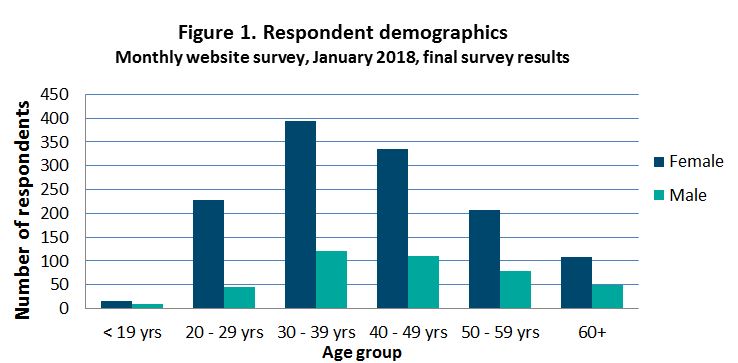
Survey respondents were asked to estimate the proportion of people in committed relationships that have experienced infidelity. Men and women’s estimates of the prevalence of infidelity were almost evenly spread across the response categories, with women slightly more likely to estimate higher rates of infidelity (figure 2).
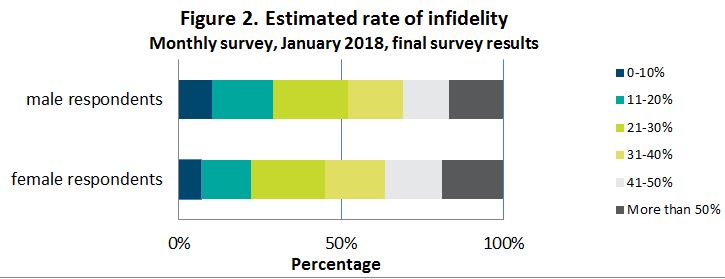
When asked about the most destructive types of infidelity, survey respondents were most likely to report that all types of infidelity were equally bad (men – 41%; women – 58%). A substantial minority of men (33%) and women (21%) reported that sexual infidelity was the most destructive type of infidelity (figure 3).
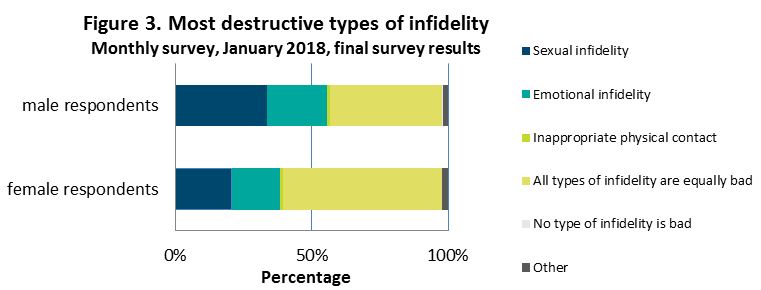
A substantial majority of survey respondents reported that they thought the main cause of infidelity was emotional disconnection (male respondents – 52%; female respondents – 60%). The second most commonly cited reason by male (23%) and female (16%) survey respondents was feeling unappreciated at home (figure 4).
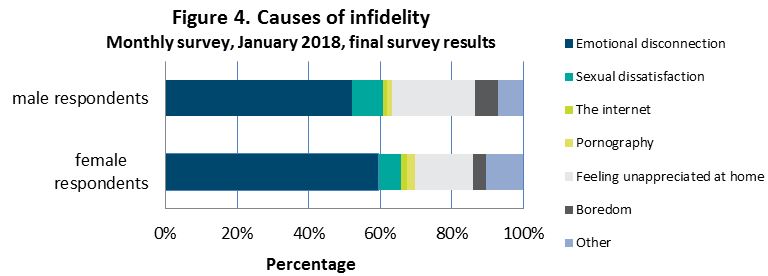
When asked about the types of people they thought were the most likely to be unfaithful, both men (35%) and women (51%) reported that men were the most likely to be unfaithful. Male survey respondents reported women or ‘other’ as the next most likely types of people to be unfaithful, while female survey respondents reported people with a family history of infidelity or ‘other’ as the next most likely (figure 5).
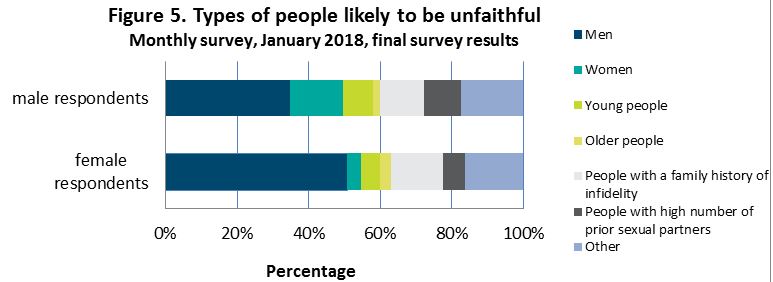
A majority of survey respondents considered that infidelity should not always signal the end of the relationship (male respondents – 64%; female respondents – 54%). However, more than 10 per cent of men and women thought infidelity should always signal the end of the relationship.
Two-thirds of men and women reported that the partner of the unfaithful person was the most affected by infidelity, while a further one-quarter of men and one-fifth of women reported that the couple’s child or children were the most affected by infidelity (figure 6).
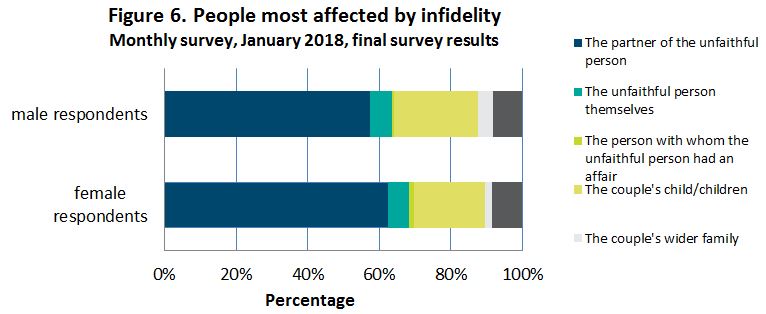
References
Knopp, K., Scott, S.B., Ritchie, L.L., Rhoades, G.K., Markman, H.J., & Stanley, S.M. (2017). Once a cheater, always a cheater? Serial infidelity across subsequent relationships. Archives of Sexual Behavior. Advance online publication. https://doi.org/10.1007/s10508-017-1018-1
Mark, KP, Janssen, E, Milhausen, RR (2011) Infidelity in heterosexual couples: demographic, interpersonal, and personality-related predictors of extradyadic sex. Arch Sex Behav. 2011 Oct;40(5):971-82.
http://www.divorcestatistics.info/latest-infidelity-statistics-of-usa.html
https://healthresearchfunding.org/26-surprising-statistics-cheating-spouses/
